Sanya is the southernmost city on Hainan Island, and one of the three prefecture-level cities of Hainan Province, in Southeast China. According to the 2010 Census, the population of Sanya is of 685,408 inhabitants,[1] living in an area of 1,919.58 square kilometres (741.15 sq mi). The city is renowned for its tropical climate and has emerged as a popular tourist destination, also serving as the training site of the Chinese national beach volleyball team. Sanya is home to small concentrations of Utsul people.
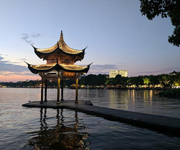
Hangzhou, as the capital of Zhejiang Province in Eastern China, Hangzhou's climate is humid subtropical with four distinctive seasons, characteristiced by long, very hot, humid summers and chilly, cloudy and drier winters (with occasional snow). Its traffic is convenient for people’s life. For foreign students, hangzhou is served by the Hangzhou Xiaoshan International Airport, which provides direct service to many international destinations such as Thailand, Japan, South Korea, Malaysia, India, Vietnam, Ethiopia, Singapore, and the Netherlands Hangzhou has a large student population with many higher education institutions based in the city. Public universities include Zhejiang University, Zhejiang University of Technology, and Hangzhou Normal University etc. Owing to different needs,more and more students come to study in this city .
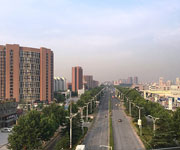
Nanjing is the capital of Jiangsu province in Eastern China. Located in the lower Yangtze River drainage basin and Yangtze River Delta economic zone, it was a prominent place in Chinese history and culture, having been the capital of China for several periods and was recognized as one of the Four Great Ancient Capitals of China. Now, Nanjing has been ranked seventh in the evaluation of “Cities with strongest Comprehensive Strength” issued by the National statistics Bureau. Nanjing has been the educational center in southern China for more than 1700 years. Currently, it boasts of some of the most prominent educational institutions in the region like China Pharmaceutical University, Nanjing University, etc. With its special characteristics, many international students choose to study in Nanjing.
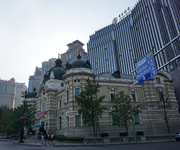
Dalian is a major city and seaport in the south of Liaoning Province, People's Republic of China. It is the southernmost city of Northeast China and China's northernmost warm water port, at the tip of the Liaodong Peninsula. Dalian is the province's second largest city and has sub-provincial administrative status; only the provincial capital (Shenyang) is larger. The Shandong Peninsula lies southwest across the Bohai Sea; Korea lies across the Yellow Sea to the east. Today, a financial, shipping and logistics center for Northeast Asia, Dalian has a significant history of being used by foreign powers for its ports: Dalian proper was previously known as both Dalny (Russian: Дальний; Dal'nii) and Dairen (Japanese: 大連) but it was better known as both Port Arthur (Russian: Порт-Артур; Port-Artur) and Ryojun (Japanese: 旅順) from its Lüshunkou district. In 2006, Dalian was named China's most livable city by China Daily.
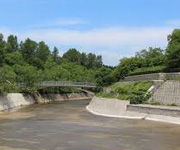
Changchun is the capital and largest city of Jilin province, located in the northeast of the People's Republic of China, in the center of the Songliao Plain. It is administered as a sub-provincial city including counties and county-level cities, with a population of 7,674,439 at the 2010 census under its jurisdiction. The city's built-up (or metro) area, including 5 districts and 4 development areas, had a population of 3,815,270 in 2010 as Shuangyang district is not conurbated yet. The name, which means "Long Spring", originated from the Jurchen language. Known as China's Automobile City, Changchun is an important industrial base with a particular focus on the automotive sector. Apart from this industrial aspect, Changchun is also one of four "National Garden Cities" awarded by the Ministry of Construction of P.R. China in 2001 due to its high urban greening rate.
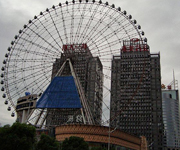
Changsha (simplified Chinese: 长沙; traditional Chinese: 長沙; pinyin: Chángshā) is the capital of Hunan Province in south-central China, located on the lower reaches of the Xiang River, a branch of the Yangtze River. Its municipality covers an area of 11,819 square kilometres (4,563 sq mi) and, according to the 2010 Census, a population of 7,044,118 inhabitants. The city's urban area has a population of 3,617,469. Changsha was important from the time of the Qin dynasty (221–207 BC). In AD 750–1100 Changsha was a major commercial hub, and its population increased greatly. Under the Qing dynasty, from 1664, it was the capital of Hunan province, and it was a major rice market. It was besieged during the Taiping Rebellion but never fell. Changsha was the site of Mao Zedong's conversion to communism. It was the scene of major battles in the Sino-Japanese War of 1937–45 and was briefly occupied by the Japanese. Rebuilt since 1949, the city is now a major interior port and a commercial and industrial center.
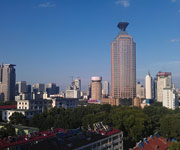
Jinan (Chinese: 济南市) is the capital of Shandong province in Eastern China. The area of present-day Jinan has played an important role in the history of the region from the earliest beginnings of civilization and has evolved into a major national administrative, economic, and transportation hub. The city has held sub-provincial administrative status since 1994. Jinan is often referred to as the 'Spring City' for its well-known 72 artesian springs inside urban area. Its population was 6,813,984 at the 2010 census whom 4,335,989 lived in the built-up (or metro) area made up of 6 urban districts.
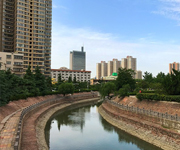
Zhengzhou is the capital of Henan Province located in east-central China. As a prefecture-level city, it also serves as the political, economic, technological, and educational centre of the province, as well as a major transportation hub for Central China. The city lies on the southern bank of the Yellow River, and is one of the Eight Great Ancient Capitals of China. With 8,626,505 inhabitants according to the 2010 census and 4,867,388 in its built-up area (6 urban districts + Xingyang City), the city is one of the main built up areas of Henan region. Zhengzhou is now a rapidly growing city. Greater Zhengzhou was named as one of the 13 emerging megacities or megalopolises in China in a July 2012 report by the Economist Intelligence Unit.
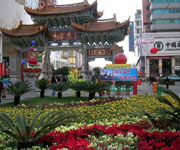
Kunming is the capital and largest city in Yunnan Province, Southwest China. Known as Yunnan-Fu (云南府, Yúnnánfǔ) until the 1920s, today it is a prefecture-level city and the political, economic, communications and cultural centre of the province as well as the seat of the provincial government. The city is also home to several universities, museums, galleries and other important economic, cultural, and educational institutions. The headquarters of many of Yunnan's large businesses are in Kunming as well. It was important during World War II as a Chinese military center, American air base, and transport terminus for the Burma Road. Located in the middle of the Yunnan–Guizhou Plateau, Kunming is located at an altitude of 1,900 metres (6,234 feet) above sea level and at a latitude just north of the Tropic of Cancer. It covers an area of 21,473 square kilometres (8,291 sq mi) and its urban area covers 2,622 square kilometres (1,012 sq mi). Kunming has population of 6,432,212, including 3,583,429 in the built-up area made up of 4 urban and 1 suburban districts, and is located at the northern edge of the large Lake Dian, surrounded by temples and lake-and-limestone hill landscapes.
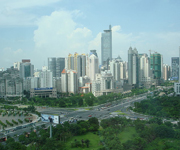
Nanning (simplified Chinese: 南宁; traditional Chinese: 南寧; Zhuang: Namzningz; meaning 'South Tranquility') is the capital of the Guangxi Zhuang Autonomous Region in southern China. It is known as the "Green City" because of its abundance of lush tropical foliage.
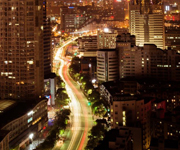
Ningbo (help·info) (Chinese: 宁波; pinyin: Níngbō; Ningbo dialect: About this sound Nyin-poh/Nyin-pou (help·info)), also formerly written Ningpo, is a seaport city in the northeast of Zhejiang province, People's Republic of China. Holding sub-provincial administrative status and separate state-planning status, as of the 2010 census, the municipality had a population of 7.6 million — with 3.5 residing in the built-up (or metro) area made of the 6-district urban area proper. Ningbo lies south of the Hangzhou Bay, which separates it from the municipalities of Jiaxing and Shanghai; to the east it faces the East China Sea; borders Shaoxing to the west; borders Taizhou to the south; and is separated from Zhoushan by a narrow body of water.
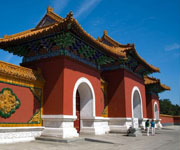
Shenyang, formerly romanized as Mukden, is the capital and largest city of Liaoning Province, as well as the largest city in Northeast China by urban population. According to the 2010 census, the city's urban area has 6,255,921 inhabitants, while the total population of the Shenyang municipality is up to 8,106,171. Currently holding sub-provincial administrative status, the city was once known as Shengjing or Fengtian Prefecture. In the 17th century, Shenyang was conquered by the Manchu people and briefly used as the capital of the Qing dynasty. Along with its nearby cities, Shenyang is an important industrial centre in China, and serves as the transportation and commercial hub of China's northeast—particularly with Japan, Russia, and Korea.[9] A titan of heavy industry since the 1930s, and the spearhead of the Chinese central government's Northeast Area Revitalization Plan, the city has been diversifying its industry and now has a solid industrial foundation, a good land and air transport network, abundant natural resources, and a skilled workforce.
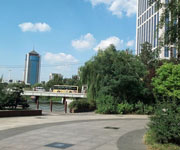
Weifang (simplified Chinese: 潍坊; traditional Chinese: 濰坊; pinyin: Wéifāng) is a prefecture-level city in central Shandong province, People's Republic of China. It borders Dongying to the northwest, Zibo to the west, Linyi to the southwest, Rizhao to the south, Qingdao to the east, and looks out to the Laizhou Bay to the north. Its population was 9,086,241 at the 2010 census whom 2,659,938 in the built-up (or metro) area made up of 4 urban districts (Kuiwen, Weicheng, Hanting and Fangzi) and Changle County largely being urbanized.
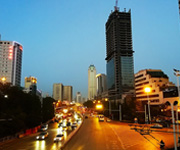
Wuhan, is the capital of Hubei province. It lies in the eastern Jianghan Plain at the intersection of the middle reaches of the Yangtze and Han rivers. It is a major transportation hub with dozens of railways,roads and expressways passing through the city. For its crucial location in domestic transportation, Wuhan was to some degree referred to as the Chicago of China.” Wuhan Tianhe International Airport is one of the busiest airports in central China and it is located 26 kilometres (16 mi) north of Wuhan. The education level of this city is comparatively high than normal city. Many famous university of this city attracted more and more international students.
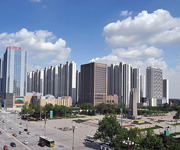
Tangshan (Chinese: 唐山; pinyin: Tángshān) is a largely industrial prefecture-level city in northeastern Hebei province, People's Republic of China. It has become known for the 1976 Tangshan earthquake which measured 7.8 on the Richter scale and killed at least 255,000 residents. The city has since been rebuilt and has become a tourist attraction. The city of Tangshan is approximately 149 kilometers, 92 miles or 80 nautical miles east by south east of the country's capital city of Beijing. It takes roughly 2 hours by road to get from Tangshan to Beijing. Tangshan's prefecture population was 7,577,289 at the 2010 census, with 3,187,171 in the built-up (or metro) area made of the 6 urban core districts.
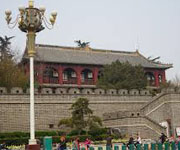
Jining (simplified Chinese: 济宁; traditional Chinese: 濟寧; pinyin: Jǐníng) is a prefecture-level city in southwestern Shandong province. It borders Heze to the southwest, Zaozhuang to the southeast, Tai'an to the northeast, and the provinces of Henan and Jiangsu to the northwest and south respectively. Jining, which is located right to the north of the Lake Nanyang (Chinese: 南阳湖; pinyin: Nányáng Hú), is today the northernmost city reachable by navigation on the Grand Canal of China. Its population was 8,081,905 at the 2010 census, of whom 1,241,012 lived in the built-up (or metro) area made up of Rencheng urban district on 884 km2 (341 sq mi), Yanzhou district not being totally conurbated yet.
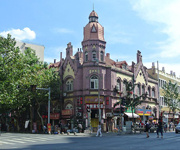
Qingdao (Chinese: 青岛; pinyin: About this sound Qīngdǎo (help·info); former German: Tsingtau; former official romanization: Tsingtao) is a major city in eastern Shandong Province, Eastern China. Administered at the sub-provincial level, Qingdao has jurisdiction over seven districts and five county-level cities. According to the 2010 census, the built-up (or metro) area made up of 6 urban districts and Jimo City had 5,764,384 inhabitants, while the total population of the sub-provincial city is up to 8.71 million. Lying across the Shandong Peninsula and looking out to the Yellow Sea, it borders Yantai to the northeast, Weifang to the west and Rizhao to the southwest. Qīng (青) in Chinese means "green" or "lush", while dǎo (岛) means "island". Qingdao is a major seaport, naval base, and industrial centre. The world's longest sea bridge, the Jiaozhou Bay Bridge, links the main urban area of Qingdao with Huangdao district, straddling the Jiaozhou Bay sea areas. It is also the site of the Tsingtao Brewery, the second largest brewery in China. In 2007, Qingdao was named as among China's top ten cities by the Chinese Cities Brand Value Report, which was released at the 2007 Beijing Summit of China Cities Forum. In 2009, Qingdao was named China's most livable city by the Chinese Institute of City Competitiveness.
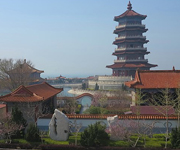
Yantai (Chinese: 烟台; pinyin: Yāntái), formerly known as Chefoo or Chih-fou, is a prefecture-level city in northeastern Shandong province, People's Republic of China. Located on the Bohai Strait and the southern coast of the Korea Bay, Yantai borders the cities of Qingdao and Weihai to the southwest and east respectively. It is the largest fishing seaport in Shandong. Its population was 6,968,202 at the 2010 census whom 2,227,733 lived in the built-up area made up of 4 urban districts (Zhifu, Muping, Fushan and Laishan). The contemporary name of Yantai came from the watchtowers constructed on Mount Qi in 1398, during the reign of the Hongwu Emperor, founding emperor of the Ming Dynasty (yan—smoke; tai—tower). The towers served to raise alarms against invasions of Japanese pirates.
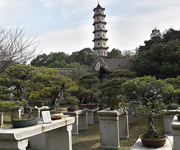
Wenzhou (About this sound listen (help·info)) (simplified Chinese: 温州市; traditional Chinese: 溫州市; pinyin: Wēnzhōu Shì; former official name: Wenchow) is a prefecture-level city in southeastern Zhejiang province in the People's Republic of China. At the time of the 2010 Chinese census, 6,642,592 people lived in its built-up (or metro) area made of Wenzhou's city proper (3,039,439 inhabitants in 3 urban districts), Ruian and Yueqing cities largely being urbanized, and Yongjia County conurbated on its southern part. The area under its jurisdiction (which includes two satellite cities and six counties) held a population of 9,122,102. Its coastline opens on the East China Sea; its borders connect it to Lishui on the west, Taizhou on the north, and Fujian to the south. The name Wenzhou, translates to "a mild and pleasant land." Originally known as Yongjia, Yung-chia or Yungkia (Chinese: 永嘉; pinyin: Yǒngjiā), Wenzhou was a prosperous foreign treaty port, which remains well-preserved today. It is situated in a mountainous region and, as a result, has been isolated for most of its history from the rest of the country, making the local culture and language very distinct not only from the rest of China but from neighbouring areas as well. It is also known for its emigrants who leave their native land for Europe and the United States, with a reputation for being entrepreneurs who start restaurants, retail and wholesale businesses in their adopted countries. People of Wenzhou origin make up a large number of ethnic Chinese residents of Italy, France, and Spain.
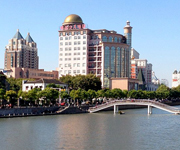
Nantong (Chinese: 南通; pinyin: Nántōng; former names: Nan-t'ung, Nantung, Tongzhou, or Tungchow; Qihai dialect: [nie tʰoŋ]) is a prefecture-level city in Jiangsu province, China. Located on the northern bank of the Yangtze River, near the river mouth. Nantong is a vital river port bordering Yancheng to the north, Taizhou to the west, Suzhou and Shanghai to the south across the river, and the East China Sea to the east. Its current population is 7,282,835 at the 2010 census, 1,994,708 of whom live in the built-up area made up of 3 urban districts.
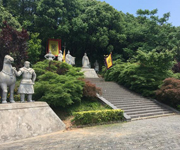
Wuxi (simplified Chinese: 无锡; traditional Chinese: 無錫; pinyin: Wúxī) is an old city in southern Jiangsu province, People's Republic of China. Split in half by Lake Tai, Wuxi borders Changzhou to the west and Suzhou to the east. The Yangtze River lies between the northern half of Wuxi and Taizhou, while the southern half of the city borders the province of Zhejiang. Wuxi is also famous for being one of the birthplaces of China's modern industry and commerce, as well as the hometown of many important businessmen who have played essential roles in building commerce in Shanghai since the early 20th century.
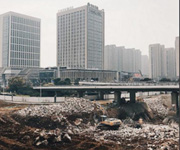
Xuzhou, otherwise known as Pengcheng in ancient times, is a major city in and the fourth largest prefecture-level city of Jiangsu province, People's Republic of China. Its population was 8,577,225 at the 2010 census whom 2,623,066 lived in the built-up (or metro) area made of Quanshan, Gulou, Yunlong and Tongshan districts. It is known for its role as a transportation hub in northwestern Jiangsu, as it has expressways and railway links connecting directly to the provinces of Henan and Shandong, the neighboring port city of Lianyungang, as well as the economic hub Shanghai. Before the adoption of Hanyu Pinyin, the city's name was typically Romanized as Suchow, Süchow, although also appearing as Siu Tcheou [Fou], Hsu-chou, Hsuchow, and Hsüchow.

Yancheng (Chinese: 盐城; pinyin: Yánchéng) is a prefecture-level city in northeastern Jiangsu province, People's Republic of China. The city with the largest jurisdiction area in Jiangsu, Yancheng borders Lianyungang to the north, Huai'an to the west, Yangzhou and Taizhou to the southwest, Nantong to the south, and looks out to the Yellow Sea to the east. Yancheng, literally "Salt City", is named after the salt harvest fields that surround the city. According to historical records,[which?] collection and production of sea salt in the region began as early as 119 BC during the Western Han Dynasty, when the settlement on the current location of Yancheng was named Yandu County (鹽都縣). According to the 2010 Census, Yancheng has a registered population of 8,203,728 — with 7,260,240 permanent residents. Its built up area made of Tinghu and Yandu Districts, was home to 1,615,717 inhabitants in 2010.
Luoyang (Chinese: 洛阳; pinyin: Luòyáng;; IPA: [lwɔ̂jɑ̌ŋ]) is a prefecture-level city in western Henan province of Central China. It borders the provincial capital of Zhengzhou to the east, Pingdingshan to the southeast, Nanyang to the south, Sanmenxia to the west, Jiyuan to the north, and Jiaozuo to the northeast. As of the final 2010 census, Luoyang had a population of 6,549,941 inhabitants with 1,857,003 people living in the built-up (or metro) area made of city's five urban districts, all of which except the Jili District not urbanized yet. Situated on the central plain of China, Luoyang is one of the cradles of Chinese civilization, and is one of the Four Great Ancient Capitals of China.
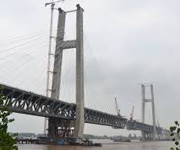
Huanggang City (simplified Chinese: 黃冈; traditional Chinese: 黃岡; pinyin: Huánggāng) is a major municipality (also known as a Prefecture) in eastern Hubei province, People's Republic of China. It is situated to the north of the middle reaches of the Yangtze River and is bounded in the north by the Dabie Shan mountain range. Seven counties fall under its jurisdiction (Tuanfeng, Hong'an, Xishui, Qichun, Huangmei, Luotian, and Yingshan) plus two county-level cities (Wuxue and Macheng), as well as two direct administrative divisions (Huangzhou and Longganghu). The city's administrative area covers 17,446.63 square kilometres (6,736.18 sq mi) and the total population was 6,162,069 as of the 2010 census, only 366,769 of whom resided in the urban area. The Ezhou - Huanggang built-up (or metro) area was home to 1,035,496 inhabitants comprising (Echeng district and Huangzhou district of Huanggang prefecture). In 2007, the city is named China's top ten livable cities by Chinese Cities Brand Value Report, which was released at 2007 Beijing Summit of China Cities Forum.
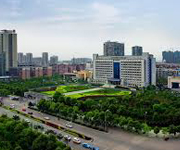
Hengyang (simplified Chinese: 衡阳; traditional Chinese: 衡陽; pinyin: Héngyáng) is the second largest city of Hunan Province, People's Republic of China. It straddles the Xiang River about 160 km (99 mi) south of the provincial capital of Changsha.
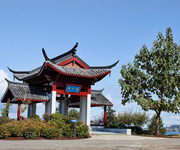
Fuzhou (Chinese: 福州; pinyin: Fúzhōu, [fǔtʂóʊ]; Fuzhou dialect: Hók-ciŭ; also formerly Minhow) is the capital and one of the largest cities in Fujian province, People's Republic of China. Along with the many counties of Ningde, those of Fuzhou are considered to constitute the Mindong (lit. East of Fujian) linguistic and cultural area. Fuzhou's core counties lie on the north (left) bank of the estuary of Fujian's largest river, the Min River. All along its northern border lies Ningde, and Ningde's Gutian County lies upriver. Fuzhou's counties south of the Min border on Putian, Quanzhou, Sanming and Nanping prefectures. Its population was 7,115,370 inhabitants as of the 2010 census, of whom 4,408,076 inhabitants are urban standing around 61.95%, while rural population is at 2,707,294 standing around 38.05 percent.
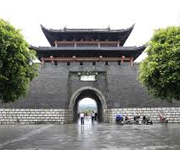
Ganzhou (Chinese: 赣州; pinyin: Gànzhōu), formerly romanized as Kanchow, is a prefecture-level city in southern Jiangxi province, People's Republic of China, bordering Fujian to the east, Guangdong to the south, and Hunan to the west. Its administrative seat is at Zhanggong District. Its population was 8,361,447 at the 2010 census whom 1,977,253 in the built-up (or metro) area made of Zhanggong and Nankan urban Districts and Gan County largely being urbanized.
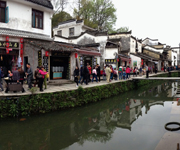
Shangrao (simplified Chinese: 上饶; traditional Chinese: 上饒; pinyin: Shàngráo) is a medium-sized prefecture-level city located in the northeast of Jiangxi province, People's Republic of China, bordering Anhui to the north, Zhejiang to the east, and Fujian to the south; the city's western reaches extend into Poyang Lake. According to the 2010 Census, Shangrao has a population of 6,579,714 inhabitants. Shangrao itself is at the very western edge of the Wu-speaking areas, while most of its associated counties speak Gan.
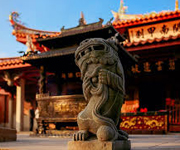
Quanzhou (formerly called Zayton/Chinchew, Chinese: 泉州; pinyin: Quánzhōu; Wade–Giles: Ch'üan2-chou1; Pe̍h-ōe-jī: Chôan-chiu) is the largest city of Fujian Province, People's Republic of China. It borders all other prefecture-level cities in Fujian but two (Ningde and Nanping) and faces the Taiwan Strait. In older English works, its name may appear as Chinchew, Chinchu, Choanchew, or Zayton, from Arabic. The prefecture-level city of Quanzhou has an area of 11,245 square kilometres (4,342 sq mi) and, as of the 2010 Census, a population of 8,128,530 inhabitants. Its extended metropolitan (built-up area) is home to 6,107,475 inhabitants, encompassing the Licheng, Fengze, and Luojiang urban districts, Jinjiang, Nan'an, and Shishi cities, Hui'an county, and the Quanzhou District for Taiwanese Investment. Quanzhou is now the 12th largest Chinese extended metropolitan area (as of 2010).
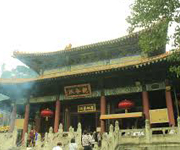
Foshan (Chinese: 佛山), is a prefecture-level city in central Guangdong province, People's Republic of China. The area under the city's jurisdiction is about 3,848.49 km2 (1,485.91 sq mi) and currently has a population of 7.2 million all urban. It's part of probably the most important built-up area in the world, the Pearl River Delta Mega City with more than 44,78 million inhabitants at the 2010 census spread on 9 municipalities (including Macao) and 17,573 km2. The native dialect is the Foshan variant of Cantonese, but many areas of Foshan are now occupied by Mandarin-speaking migrants.
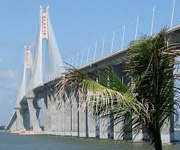
Zhanjiang (Chinese: 湛江; pinyin: Zhànjiāng; French: Fort-Bayard), is a prefecture-level city at the southwestern end of Guangdong province, People's Republic of China, facing Hainan to the south. Its population was 6,994,832 inhabitants at the 2010 census. 1,611,868 live in the built-up area made of four urban districts: Chikan, Xiashan, Potou and Mazhang. In 2007, the city is named China's top ten livable cities by Chinese Cities Brand Value Report, which was released at 2007 Beijing Summit of China Cities Forum.
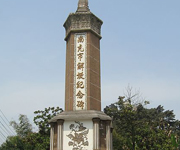
Nanchong (Chinese: 南充; pinyin: Nánchōng; Wade–Giles: Nan-ch'ung; Sichuanese: lan2cong1; ) is a prefecture-level city in the northeast of Sichuan province, People's Republic of China, with an area of 12,479.96 square kilometres (4,818.54 sq mi), and at the 2010 census was home to 6,278,614 people whom 1,858,875 lived in the built-up (or metro) area made of 3 urban districts. It is the second most populated city of Sichuan Province, only after Chengdu. The administrative center is Shunqing District.
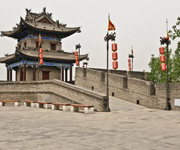
Xi'an (Chinese: 西安; pinyin: Xī'ān), formerly romanized as Sian, is the capital of Shaanxi province, located in the northwest of the People's Republic of China, in the center of the Guanzhong Plain. One of the oldest cities in China, the city was known as Chang'an before the Ming dynasty. Xi'an is one of the Four Great Ancient Capitals of China, having held the position under several of the most important dynasties in Chinese history, including Zhou, Qin, Han, Sui, and Tang. Xi'an is the starting point of the Silk Road and home to the Terracotta Army of Emperor Qin Shi Huang. Since the 1990s, as part of the economic revival of interior China especially for the central and northwest regions, the city of Xi'an has re-emerged as an important cultural, industrial and educational centre of the central-northwest region, with facilities for research and development, national security and China's space exploration program. Xi'an currently holds sub-provincial status, administerring 9 districts and 4 counties. According to the 2010 Census, Xi'an has an urban population of 5,566,711 in its built-up area made of 7 out of 10 districts (all but Yanliang, Lintong and Gaoling not urbanized yet), while the total population of the Municipality is up to 8,467,837. It is the most populous city in Northwest China, as well as one of the three most populous cities in Western China. According to a July 2012 report by the Economist Intelligence Unit, it was recently named as one of the 13 emerging megacities, or megalopolises, in China. The report pinpoints and highlights the demographic and income trends that are shaping these cities' development.
 Immediate attention
Immediate attention